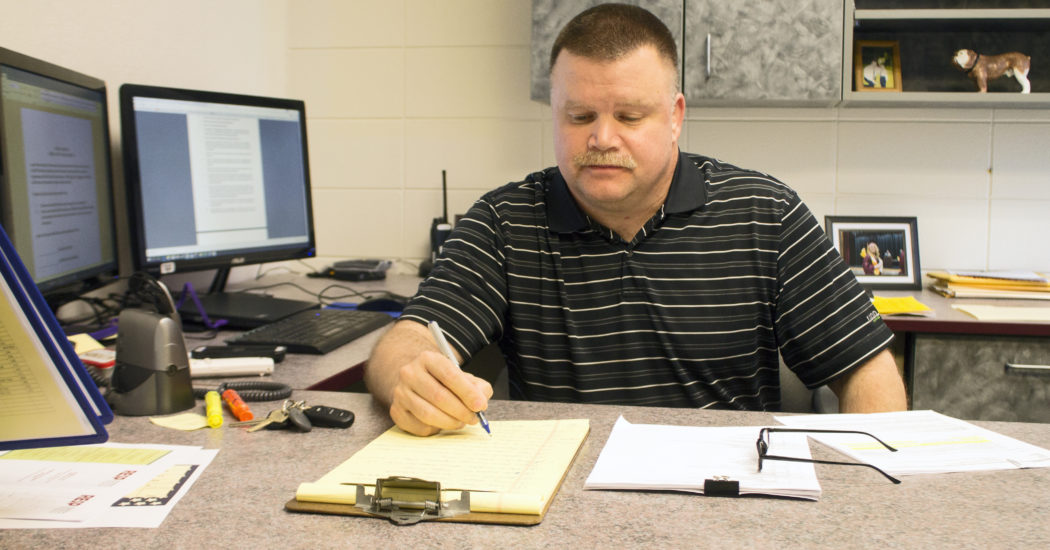
We are almost one month into our school year and things are running great. One topic that has been a huge part of my learning curve as a North Dakota school superintendent is how the North Dakota school funding works and how our school budget is put together.
The best approach to the explanation of this complicated process is starting with the vocabulary of school budgets. The most important question would be, “what is a “mil”? Also referred as a “millage rate” a mil is a figure representing the amount per $1,000 of the assessed value of property. For example, this year our estimated taxable valuation for Bowman County School District, *(which also includes a small portion of Slope County), is a little over $22,000,000. So one thousandth (.001) of $22 million equals approximately $22,000, which for this year is the estimated value of a “mil” for Bowman County Schools for 2016-2017. The number of these “mils” that are run by either the school district, the city, the county, parks and recreation amongst many other state property tax supported essential services effects the property taxes of a person’s residence, a business or tract of land essentially. Local services such as police, fire protection, roads, parks, schools etc. are paid for with this “valorem” tax, (tax based upon value), of your property. All of these entities may need to run additional property tax “mils” to meet their increased expenditures for their fiscal year, not only the school district, which many tax payers may be misinformed about. Our county assessor ensures that everyone shares equitably in the total burden of property taxation. When our school district has to raise our portion of the property taxes we have to advertise in our local newspaper the percent of increase and hold a hearing to explain to any tax payer the reasons for any dollar amount increase in property tax monies. Other state agencies also have to follow these guidelines. Another area that needs explanation is roughly how much would your property taxes go up if our school district were to need additional property taxes for operation. For instance, an example home with a value of $100,000 has an assessed value of $50,000, which then is calculated a Residential Taxable Value of $4,500. If Bowman County Schools were to levy 1 more “mil” for this school year it would increase the property taxes on this $100,000 example property by approximately $1.88 per month. I would encourage all tax payers of Bowman County to examine closely their next property tax assessment. Our school district is a part of this assessment and potential increase in taxes, but only one part of many entities that are funded by property taxes. Complete comprehension of any tax system by the layperson proves to be an almost impossible task. With time and experience my understanding of school tax levies continues to grow.
The next vocabulary word would be “levy.” To “levy” is the collection of an amount of money that must be paid as assessed by a government or other local authority. As I pointed out earlier, many different agencies providing many critical services levy mils for taxes in our county. Next I will briefly list a school district’s main sources of revenue for daily operations. Each school district’s budget is generated from property taxes, county generated tax sources, (oil & gas production taxes/royalties), state foundation aid, (per student and transportation aid), and from federal sources, (Title grants, other grants). The county generated source of oil and gas production can be a huge factor in reducing other levied areas of revenue. If the oil and gas production is robust and if all the tax generated here in Bowman County stays here in Bowman County things would be great. We are currently facing challenges in both the amount of tax being generated by oil and gas production due to the current economy. The second challenge is keeping a large portion of these locally generated taxes in the area where they were generated, Bowman County. I experienced almost the very same atmosphere in Baker, Mont. Fallon County is very similar to Bowman County in that they both produce huge amounts of oil and gas, generating huge amounts of tax revenue for each county and state. Both counties are also very similar because a huge majority of the oil and gas production taxes collected are sent back to the more populated areas of each state to help them fund their public schools and services. Being new to North Dakota, I felt that I needed more background on the history of school funding. This short summary article outlines the most recent changes that have occurred since 2013. I appreciate our community’s leaders, Dan Brosz and County Auditor Sandi Tivis’ willingness to lend a hand in my learning curve on North Dakota school budgets.
Less than a decade ago, North Dakota’s funding formula looked like that of many other states: Schools were heavily reliant on property taxes as a revenue source, with as little as 40 percent of K-12 school funding coming from the state. Like other states, too, North Dakota faced lawsuits from property-poor districts that alleged the K-12 finance system was inadequate and unfair. In 2013, North Dakota implemented a K-12 funding formula tied to the cost of providing an adequate education and funded it with a combination of state and local taxes. Local property tax levy authority was decreased significantly with statewide taxes making up the difference. Statewide taxes are now funding approximately 75 percent of the cost of education. The local share is 60 mills on taxable valuation and 75 percent to 100 percent of other local in-lieu of property tax revenue. The state funds the remainder up to the adequate amount. The formula is student driven and uses various weights to account for the increased costs associated with school district size and serving students with special needs. A base per student funding rate is set by the legislature designed to generate the resources necessary to educate students to state standards. In addition, there are transitional adjustments included to minimize budget impacts that inevitably occur when making major changes. In the end, North Dakota’s K-12 funding formula provides a base of financial support per student sufficient to provide an adequate education by school districts, regardless of where the student lives or what the taxable valuation is of the district. The Legislature, through the interim Education Funding Committee, contracted with Picus-Odden and Associates to conduct a recalibration study to confirm the adequacy of that base level of support. The consultants use an evidenced – based (EB) model to determine the resources necessary to educate students to college and career ready proficiency. Included in the model are all of the components necessary to meet the standards. This includes core staffing, administration, operations, professional development, technology and instruction materials. Their report was presented to the Interim Education Funding Committee in June 2014.





